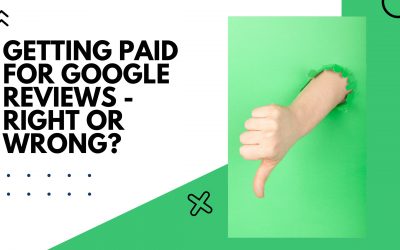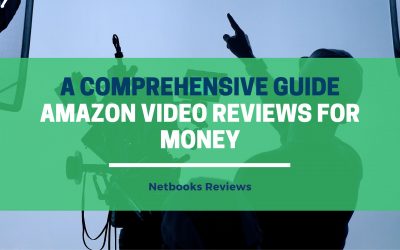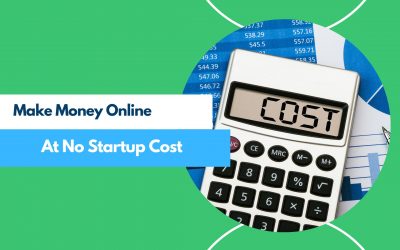3 Best Home Based Business Ideas in 2020
If you’re trying to find the online business idea that’s right for you, ask yourself the following questions:
- What are your interests?
- Where is there a need in the market, and how can your skills satisfy that need?
- Who is your ideal client?
- What is your ideal work environment?
If you have an answer to all those questions, then you may be ready to start a small business.
But if you need a little inspiration, take a look at this list of the 3 best online business ideas for 2020.
As always, my # 1 recommendation is lead generation.
I can’t help but put it at the top of the hierarchy when that’s what makes me earn more than 7 figures every month!
But let’s see what all your options are …

Do You Want the #1 Rated Semi-Passive Income Business?
- Semi-Passive
- Recurring Income
- Live Bootcamp
- 80% of the Work Done for you
- Proven Experts
Dropshipping

Dropshipping is an electronic commerce type business model…
With the big difference that the seller doesn’t need to store the products or have stock since all the logistics management is carried out by the wholesaler.
Explained in another way, in this business 3 participants come into play: customer, seller and wholesaler or dropshipper.
In a typical e-commerce business, the process to follow would be:
The seller buys the products from the distributor and stores it in their facilities.
Once the seller receives an order from a customer, the seller would be in charge of processing the order and send the product to the customer.
On the other hand, in the dropshipping mode, the seller doesn’t have stock b himself but has at his disposal that of the wholesaler or dropshipper.
Then at the time of receiving the order instead of processing and sending it as he would in a normal case, the seller contacts the wholesaler so that this is the one to send the product to the customer.
Refunds and returns are resolved by the wholesaler himself, obviously at a certain cost.
Pros of dropshipping
-
Limited investment
The risk that must be assumed when creating a traditional online store is much greater than with dropshipping.
The investment that you must assume is limited to the creation of the store, the realization of the communication strategy and different tools that you want to use to generate more sales.
There are no inventory, warehouse, or shipping costs. There are also no outdated products, nor any type of storage risk (floods or various deterioration).
You just have to worry about selling. That will be your only goal.
-
Unlimited stock
While the investment is controlled and limited, the stock is “infinite.”
Your supplier, as long as it is reliable and of a moderately acceptable size, should always be ready to respond to your shipments no matter how large the volume of orders.
In contrast, traditional stores often deal with:
- Out of stock problems.
- Change prices to get certain types of products out.
With dropshipping, you can choose which products to offer regardless of stock and you will not have to be “forcing” the exit of certain products that are obsolete in the warehouse.

-
Scalability
Imagine that you have an online shoe store that you create yourself.
What is the scalability of your business?
Would you be able to respond to an order for 100 pairs of shoes and have it reach your customer without incident within 48/72 hours?
The answer is probably no.
However, with Dropshipping your online store will be prepared to grow at any rate.
It is not relevant that a customer orders a product or 20, the supplier will almost always be ready to send the order and meet the deadlines.
Cons of dropshipping
-
Very limited margins
As the dropshipper is in charge of most of the processes associated with distribution, the price of the products is higher so if you want to be competitive, you will get limited margins.
Depending on what you save in logistics, the move can go well or badly.
-
Delivery times if your supplier doesn’t reside in the same country
It is quite common to find stores that serve in 24 or 48 hours maximum, and if your supplier resides in your country, they will surely offer these terms.
The problem comes when the drop shipper resides outside of your country, with which in addition to lengthening delivery times, possible delays come into play that can make your customers back down.
-
Extra work in terms of taxation if your supplier doesn’t reside in the same country
Doing operations outside your country implies an increase in work to have your accounts in order.
This may mean a higher cost for your accounting-tax agency and the need to have certain paperwork in order depending on the country.
-
Doubtful suppliers
There are quite a few suppliers that directly turn out to be fraudulent companies or that don’t comply with the agreement.
So there’s a high risk of fraud if you don’t document yourself well and go to specific lists, such as Salehoo, of dropshippers that have verified the legality of the suppliers they list.
-
The cost of transport is usually non-negotiable
The cost of transport per order is usually set by the supplier, according to its negotiations with the courier company, and is usually not negotiable.
Here you lose the factor of choosing the courier company that best suits your characteristics.
-
Legal loopholes and liability issues
In the US there are many sellers who take advantage of the benefits of dropshipping to sell on eBay, but many of them are not even within the law.
There is a great legal ignorance by entrepreneurs around the world about the conditions they must meet to operate normally, so it is more than advisable to seek professional advice in this matter.
There are also risks in terms of liability for misuse or a product in poor condition, which is why it is necessary to have liability insurance.
Amazon FBA

With the ecommerce sector mature and boiling, with increasingly aggressive competition, we see how more and more online stores are considering selling on Amazon.
Many put their eyes on this giant marketplace as a possible escape channel towards which to take their sales
Pros of Amazon FBA
- In the US alone, Amazon had a turnover of more than € 1,300m last year.
- Half of online sales in the US go through the Marketplace.
- According to Statista, 2,640M people visited Amazon.com in July 2017. This traffic is much higher than that of other american ecommerce giants.
- Amazon offers us the possibility to internationalize: 14 marketplaces around the world spread over South America, Europe and Asia-Pacific.
Added to this is simplicity.
Selling with Amazon, you don’t even need a website but you don’t need a warehouse either.
You can take care of logistics and distribution or delegate all that to Amazon through the so-called FBA (Fulfilled by Amazon) through a simple monthly fee and totally variable costs.
You make a single shipment to their logistics centers and they take care of storing, managing orders and delivering orders.
This means that many Amazon sellers have opted for FBA to put their products on sale, but also for a kind of business that didn’t exist as such before this modality.
It is about making a very controlled investment in high-demand products, exporting them from competitive markets such as China, Pakistan, or India, and selling them directly on the Amazon marketplace.
Cons of Amazon FBA
I have already told the positive part, but before launching to sell there it is worth taking a look at the problems it poses.
For starters, the competition is insane, with Amazon cannibalizing its own sellers.
It’s estimated that more than half of the products sold come from sellers outside of Amazon and this has been the case for several years.
This affects sellers in a number of ways, but mainly from the prism of price and margin.
As there was such a marked level of competition for almost any product, they invented something they decided to call the Buy Box.
This is what we could call the default seller, which is the one linked to the purchase button itself.
The rest of the alternatives are below or, in the worst case, hidden at a click away.
When there are several competitors trying to close the sale of the same item, Amazon puts its rules into play and decides who will get its precious purchase box.
Amazon uses the following parameters to assign the Buy Box:
- Price: this is one of the key factors since, the lower the price, the more chances of winning the Buy Box, with which the rivalry can become fierce and the margins are reduced to the minimum expression. When I talk about price, it’s the product + shipping costs (which, to be good, should be free).
- Sales regime: the products sold by them or at least under the FBA regime will always prevail.
- Reviews and ratings: Amazon seeks the best service and product for its customers, that is why it prioritizes those with the best reviews (and penalizes those who do not reach their minimum).
And this is where it makes sense to talk about another of the big drawbacks: Amazon’s rules, which can change when it suits them.
They may seem more or less fair to you, they may even be tyrannical on many occasions, but you cannot forget that they are the owners of the platform and that they decide unilaterally about what happens on it.
Lead Generation

Lead generation is a subset of affiliate marketing and although the two are based on the same referral fee model, there are subtle differences.
Unlike affiliate marketing, where you refer a prospect on to a merchant where they convert to a paying customer and you get a kickback, lead generation generally requires the user to do less.
This is a key difference between the two.
It also means that your website’s traffic is more monetizable because, after all, it is easier to get someone to fill in a form than it is to get them to part with their money.
So if a lead consists of user details, who’s interested in them?
Businesses, obviously.
And they can’t get enough of them.
For the sake of an example, let’s assume for a moment that your business operates in the finance space.
You already use online and offline marketing to drive prospects to your website or store/s where you can sell them a product or service.
But, like any business, you want to grow.
Fast.
So what do you do to get more customers?
You can’t put too much emphasis on any one single marketing channel.
So you start to pay for leads gathered by third party websites – users who are pre-qualified and interested in what you have on offer.
All the business needs to do is get on the phone and convert the prospect into a paying customer.
Without leads, companies are lost.
If they want to sell or hire their services, they need to get leads and work on them so that they end up becoming customers.
And we know they want to, because the ultimate goal of any company is to sell more. And period.
So becoming their lead generator sounds like a wonderful idea, right?
At least I find it wonderful to work on something like that and earn so much money working – honestly – so little. As you can imagine, this is for me the best online business model.
The lead generation process is nothing more than the tactics used to get contacts from people who are interested in the products or services of a certain business.
These are different techniques that contribute to the increase of leads in your database.
But be careful, you don’t want to get data from people who are not interested in your client’s business.
Collecting leads, as a goal, will not do you any good.
You want to generate leads that can be converted into customers.
Cold leads (then we will work on it to turn them into hot ones) but not “ice cream”.
What I do is create specific online ad billboards for each of my clients, besides taking me just one afternoon (and they are still active 24/7), it has many advantages:

Do You Want the #1 Rated Semi-Passive Income Business?
- Semi-Passive
- Recurring Income
- Live Bootcamp
- 80% of the Work Done for you
- Proven Experts
Pros of Lead Generation
1) You don’t need to have a website
The main advantage of generating leads with an online billboard is that you don’t need to have a website to attract potential customers.
One problem I run into when promoting a local business is that their website is a disaster.
Lazy loading is not optimized and even less converts.
The solution?
Use this type of campaign.
2) Cheaper cost per lead
My recommendation is not that you pay attention to whether it is being cheaper or more expensive.
What you have to do is measure the profitability that you are getting from each lead.
3) Reduce the number of dropouts
As it is so easy to complete the data and send it, the conversion rate can be higher compared to a landing.

If the landing takes a long time to load, it is most likely that the abandonment rate will be high and with it, you will lose potential customers.
In this way, you solve that problem.
Cons of Lead Generation
- Without the right tools, it can take a little longer than you thought to generate profits. However, not much longer than 6 months at most.
- Sometimes it can be difficult to find the perfect business as a customer
- In the beginning, you will have to put in time and effort to generate traffic.
- You are going to have to contact many business owners.
Conclusion
From my experience, what has allowed me to have an online business with which I can work from wherever and whenever I want is lead generation for local businesses.
This training program taught me to create the necessary assets to enhance my success and, without the skills I learned there, perhaps I could not have reached the 6 figures that now pay for my dream life.
Maybe I would continue my boring job from 9 to 5 …
But I was lucky to find on time (and after trying many, many business models) with the best way to earn money.
Click here if you also want to prove success.






0 Comments